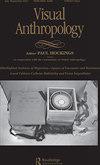为什么是穆斯林妇女和智能手机?
IF 0.3
Q3 ANTHROPOLOGY
引用次数: 0
摘要
在《为什么穆斯林妇女和智能手机》一书中,凯伦·沃尔托普研究了她的“线人”对互联网智能手机的使用,将其作为一种具有存在和支持形式的感官技术。通过这样做,她将网络空间从纯粹的平行世界转变为他们所居住的环境的组成部分。为了实现这一目标,她将本书分为四个双章节,包括四个主要章节——标记为A、B、C和d——以及四个镜像章节——标记为小写字母A、B、C和d。主要章节关注居住在哥本哈根Blaagaarden社会住房区的穆斯林妇女如何使用数字技术来引导她们的日常生活,并与全球重要的其他人、亲戚和朋友保持联系。Waltorp把方法论和认识论的问题放在一边,仔细研究主要章节中提出的问题,并在相应的镜像章节中研究方法论和认识论。她的论点的核心是哈拉卡特的概念。她解释说,这个阿拉伯语词汇被Noerrebro的年轻穆斯林用作俚语,表示以“狡猾、聪明或迷人的方式”捉弄某人(13)。Waltorp认为,智能手机在这里扮演着至关重要的角色,它为她的线人提供了一系列机会,让他们不断地进行哈拉卡特(harakat),并就“公共、私人和亲密领域的不同概念和实践,以及它们之间复杂的界面”进行协商(14)。“A”和“A”两个章节采用了Donna Haraway(1985)的半机械人概念,提出智能手机及其图像制作和共享技术改变了在环境中感知到的启示——环境不是物理世界,而是被感知或误解的东西。Waltorp认为,公共和私人之间的区别——基于必须展示的东西和必须隐藏的东西——由于她的线人在日常生活中如何协商适当的隐藏和揭露而变得模糊甚至受到挑战。例如,他们在客厅的私人物理空间拍摄的照片中戴着头巾-他们通常不需要戴头巾-因为他们计划将其上传到Facebook的半公开在线空间,而他们在为Snapchat的私人在线空间拍摄的照片中通常不戴头巾。本文章由计算机程序翻译,如有差异,请以英文原文为准。
Why Muslim Women and Smartphones?
In Why Muslim Women and Smartphones, Karen Waltorp studies the use of Internet-enabled smartphones by her “informants” as sensory technologies with forms of presence and affordances. By doing so she transforms the online spaces from mere parallel worlds to integral parts of the milieu they inhabit. To achieve this goal she organizes the book into four twin chapters, including four major chapters—marked A, B, C, and D—and four mirror chapters— marked with the small letters a, b, c, and d. The major chapters focus on how the Muslim women, who live in the Blaagaarden social housing area of Copenhagen, use digital technologies to navigate their daily lives and maintain contact with their significant others, relatives, and friends across the globe. Waltorp leaves aside questions of methodology and epistemology, to study closely the issues raised in the major chapters and methodology and epistemology in their corresponding mirror chapters. At the center of her argument lies the notion of harakat. She explains that this Arabic term is used as slang by young Muslim people in Noerrebro to imply playing a trick on someone in a “cunning, smart, or charming way” (13). The smartphone, Waltorp argues, plays a crucial role here in offering sets of opportunities for her informants to constantly do harakat and negotiate “differing notions and practices of public, private, and intimate spheres and the complex interfaces between them” (14). The twin chapters “A” and “a” take Donna Haraway’s (1985) notion of cyborg and propose that the smartphones and their image-making and sharing technology change the affordances perceived in the environment—the environment not as the physical world, but rather as what is perceived or misperceived. Waltorp argues that the distinction made between public and private—based on things that have to be shown and things that have to be hidden—is blurred or even challenged by how her informants negotiate appropriate concealing and revealing in their everyday lives. For instance, they wear hijab in the photos taken in the private physical space of the living room—where they usually do not need to wear hijab—because of the plan to upload it to the semipublic online space of Facebook, while they often do not wear hijab in photos they take for the private online space of Snapchat.
求助全文
通过发布文献求助,成功后即可免费获取论文全文。
去求助
来源期刊

Visual Anthropology
ANTHROPOLOGY-
CiteScore
1.00
自引率
50.00%
发文量
19
期刊介绍:
Visual Anthropology is a scholarly journal presenting original articles, commentary, discussions, film reviews, and book reviews on anthropological and ethnographic topics. The journal focuses on the study of human behavior through visual means. Experts in the field also examine visual symbolic forms from a cultural-historical framework and provide a cross-cultural study of art and artifacts. Visual Anthropology also promotes the study, use, and production of anthropological and ethnographic films, videos, and photographs for research and teaching.
 求助内容:
求助内容: 应助结果提醒方式:
应助结果提醒方式:


